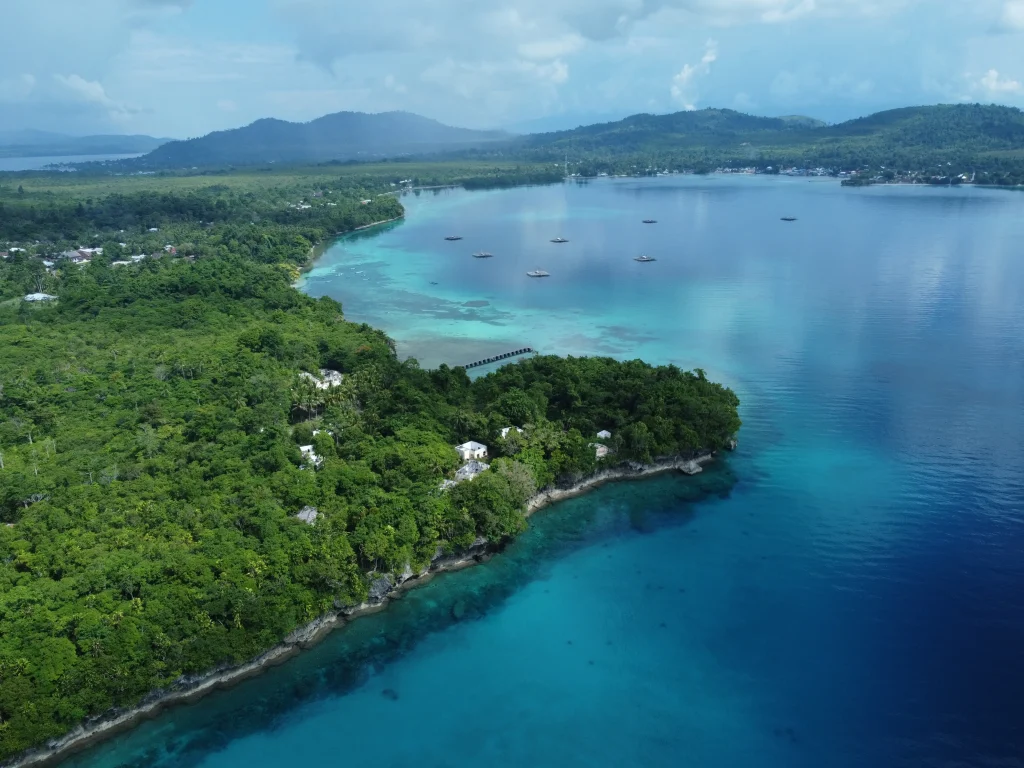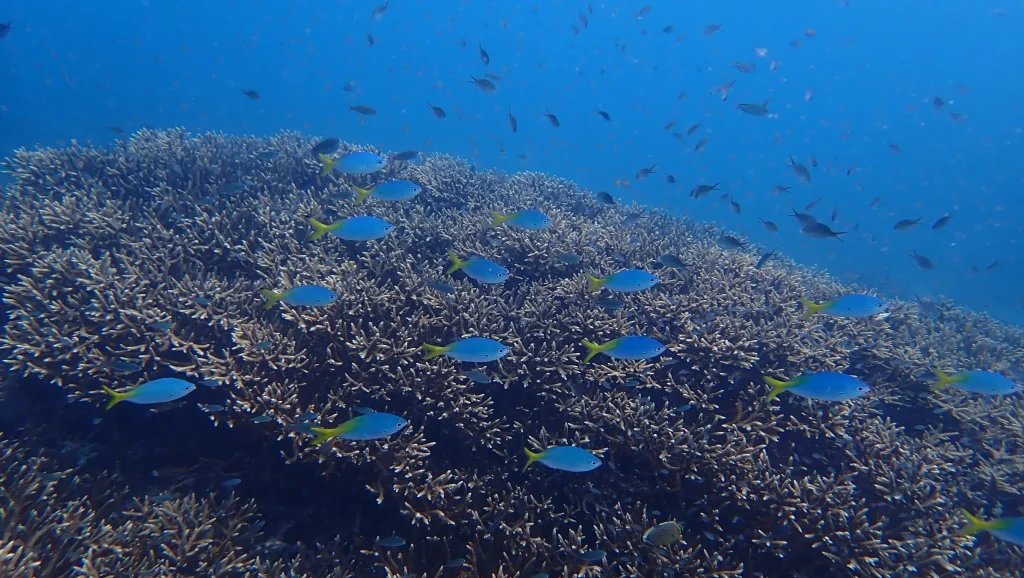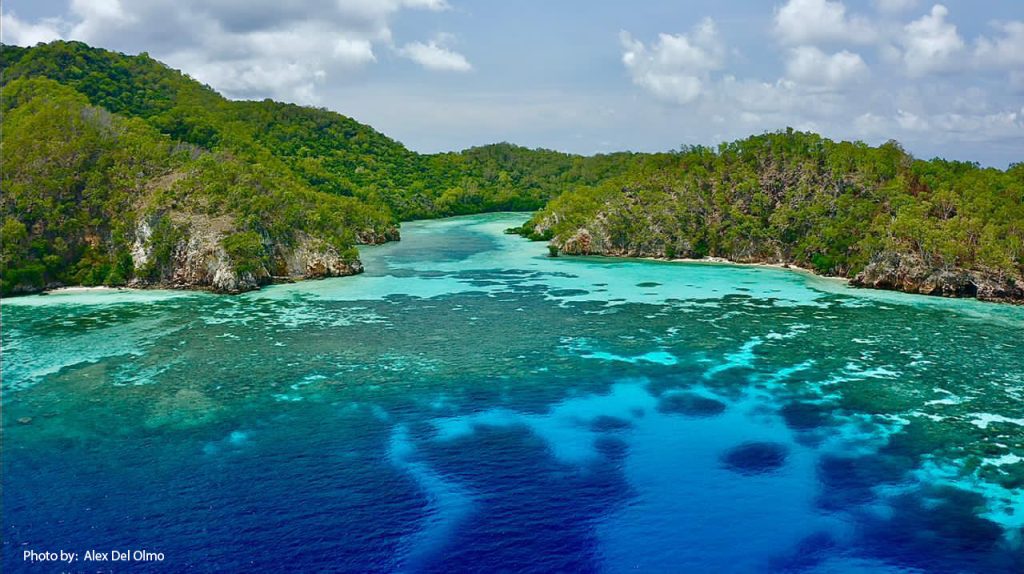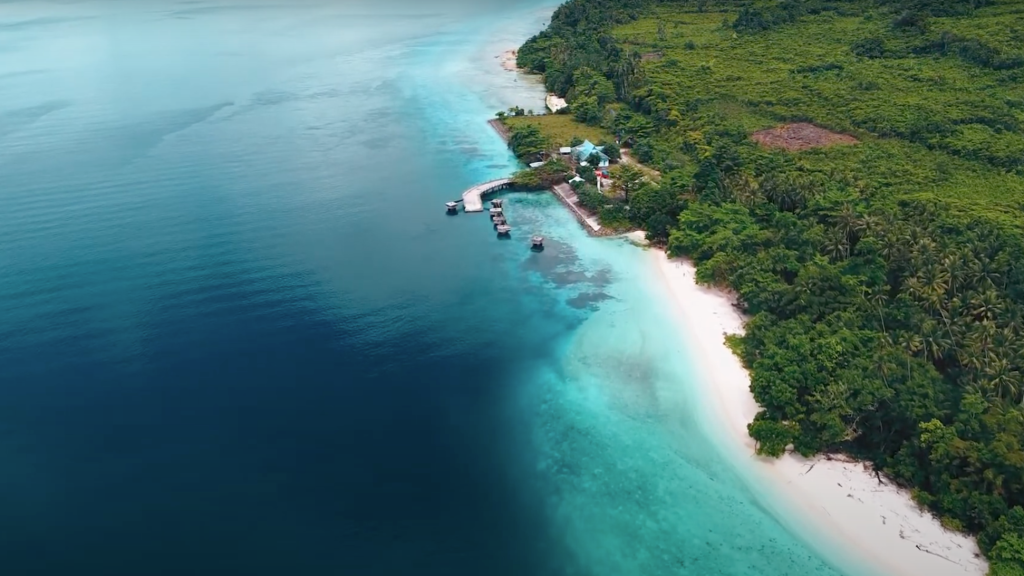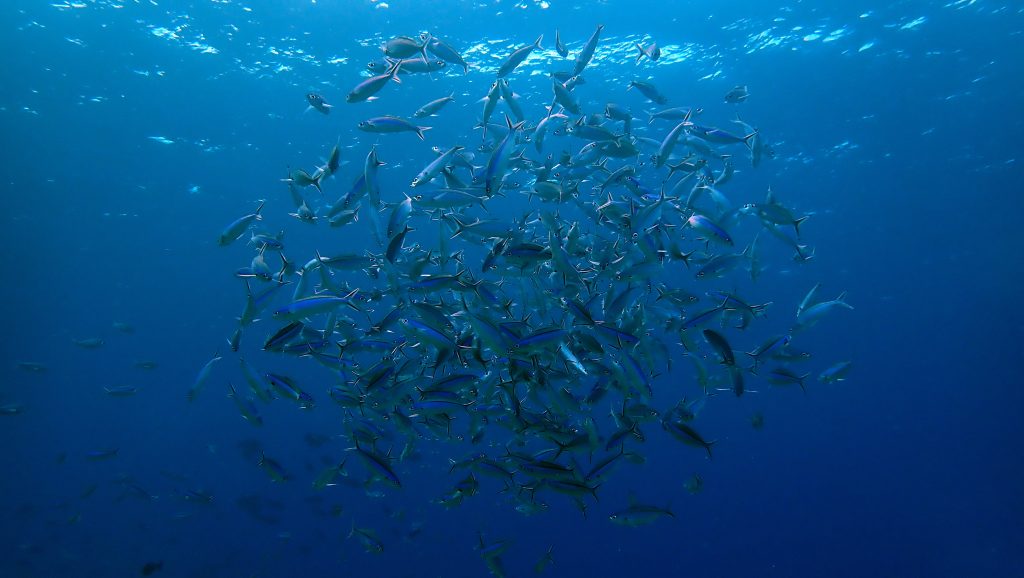The Lease Islands Marine Protected Area (MPA) in Maluku (officially, Kawasan Konservasi di Perairan Kepulauan Lease di Provinsi Maluku) surrounds the islands of Saparua, Nusa Laut, and Molana and the eastern side of Haruku. Hard coral cover reaches 100% In locations such as Nusa Laut, East Saparua, and Molana, and massive boulder corals—estimated to be centuries old—rise four to six meters high east of Nusa Laut. Blacktip sharks are regularly seen along the reef slopes, and the MPA supports protected species including seahorses, turtles, dugongs, and dolphins.
Dugongs, classified as Vulnerable on the IUCN Red List, are frequently observed grazing in seagrass meadows near Booi, Oma, and Aboru villages, especially in Saparua Bay and Paperu Bay. Turtles are known visitors to Ittawaka, while spinner dolphins—often accompanied by leaping calves—are regularly sighted between Sila and Nalahia. Each year, from September through November, sperm whales pass through the Lease Islands’ waters.
Details
|
Date Established |
Reserved by the Maluku Government in 2016; Officially established by ministerial decree in 2021 |
|
Hectares |
67,484.19 hectares; including 1,390.85 hectares of no-take zones |
Zoning Map
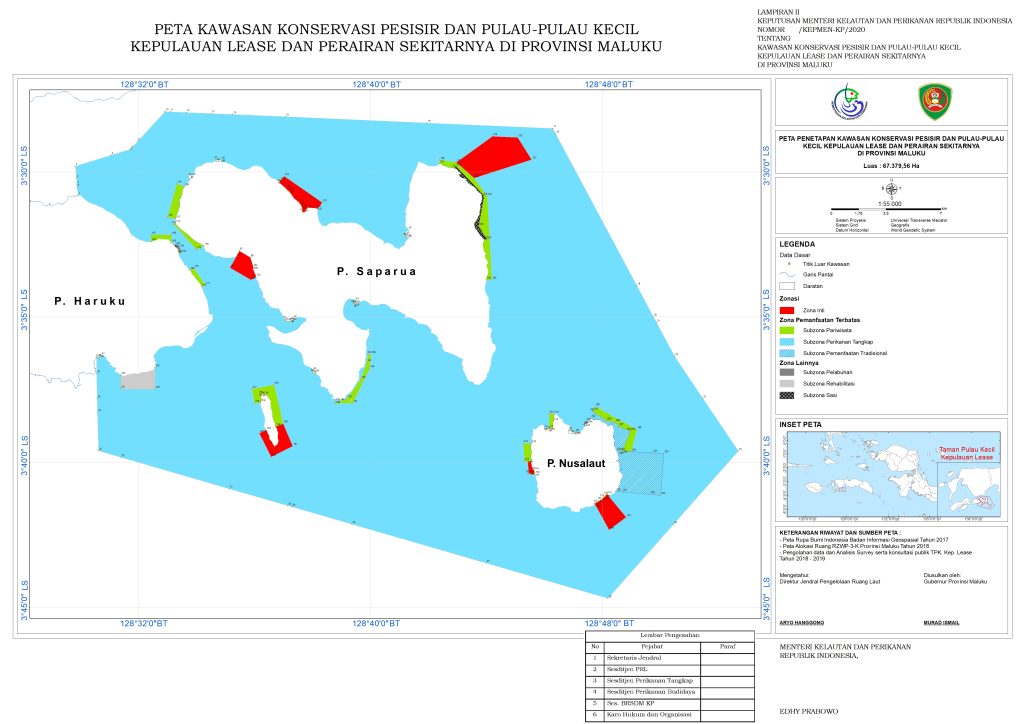
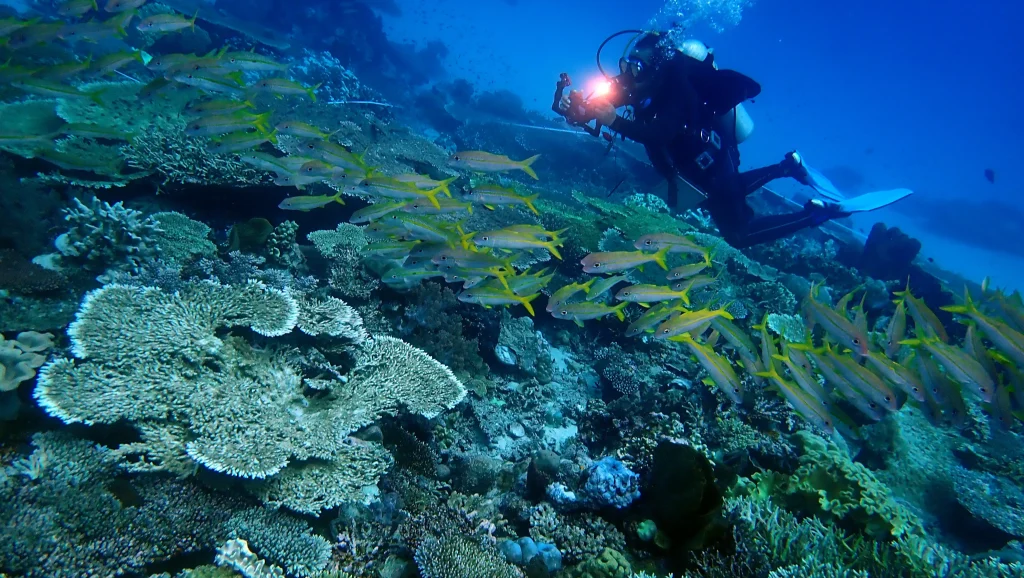
The Lease Islands are home to long-standing traditions of marine stewardship, most notably the customary practice of sasi. This system regulates when and how certain marine resources may be harvested, combining seasonal closures, restrictions on gear, and community-agreed rules. Species managed under sasi in the Lease Islands include trochus shells (Trochus niloticus), sea cucumbers (class Holothuroidea), and lompa fish (Thryssa baelama). Harvests may be shared for local consumption, such as lompa in Haruku, or sold to fund community projects, as with trochus harvests in Noloth Village. Another enduring feature of local fisheries is the pasi—deep-sea fishing grounds for red snapper, believed to coincide with deep-reef habitats. At least 25 pasi are known around the Lease Islands, and their cultural and economic importance is recognized in the Lease Islands MPA management plan, which accommodates these traditional fishing areas alongside designated no-take and sustainable-use zones.
The MPA’s governance integrates official zoning with community participation. The zoning system designates areas for no-take protection, sustainable use, and marine tourism, providing a framework that safeguards biodiversity while supporting fisheries, livelihoods, and food security. Community-based initiatives reinforce these measures: Pejuang Laut (Champions of the Sea) trains local leaders to share conservation knowledge and encourage sustainable practices, while the Kalesang Dugong Project engages residents in monitoring dugongs and seagrass habitats. This citizen-science effort has informed village-level regulations—such as Mahu Village’s coastal and marine protection decree—and inspired practical actions like Ouw Village’s bank sampah (waste bank) to reduce plastic waste in seagrass areas. Together, these approaches demonstrate how government leadership and traditional management can work in concert to sustain the Lease Islands’ marine environment.
